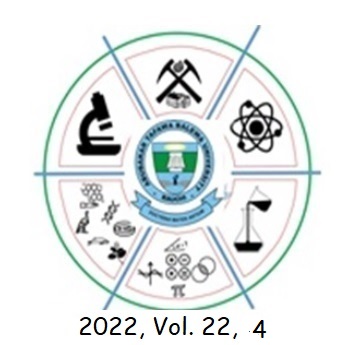2D magnetotelluric inversion of basement complex rocks of Tangur for groundwater exploration, North Central Nigeria
Abstract
2D magnetotelluric surveying is becoming common in Nigeria for groundwater explora
t
ion because the equipment is cheaper compared to other geophysical tools and also
very easy to use in terms of field application. The results are presented in 2D inversions,
making it relatively easy to be interpreted in terms of electrical distribution and variations
within the subsurface. Ten profiles of magnetotelluric data were conducted in Tangur
and Environs, which is basically a basement terrain, with the aim of delineating areas
for groundwater exploration. Tangur falls under the Sha-Kaleri complex whose geology
includes granite Gneiss, biotite granite, basalt, and diorite dike. The geological structures
include fractures, mafic-rich mineral dikes, and mafic enclaves. The profile results show
that the study area has good groundwater potentials. The resistivity values of potential
areas for groundwater exploration in Tangur from 2D magnetotelluric profiles are 115
215, 130–205, 123–245, 35–125, 90–240, and 155–245 Ωm, while the depths for drilling
of boreholes are recommended to be 60–80, 0–80, 60–80, 180–200, and 180–200 m,
respectively; these are based on the location of the profiles.
Downloads
Downloads
Published
Issue
Section
License
Copyright (c) 2025 Journal of Pure and Applied Sciences (Science Forum)

This work is licensed under a Creative Commons Attribution-NonCommercial-ShareAlike 4.0 International License.




